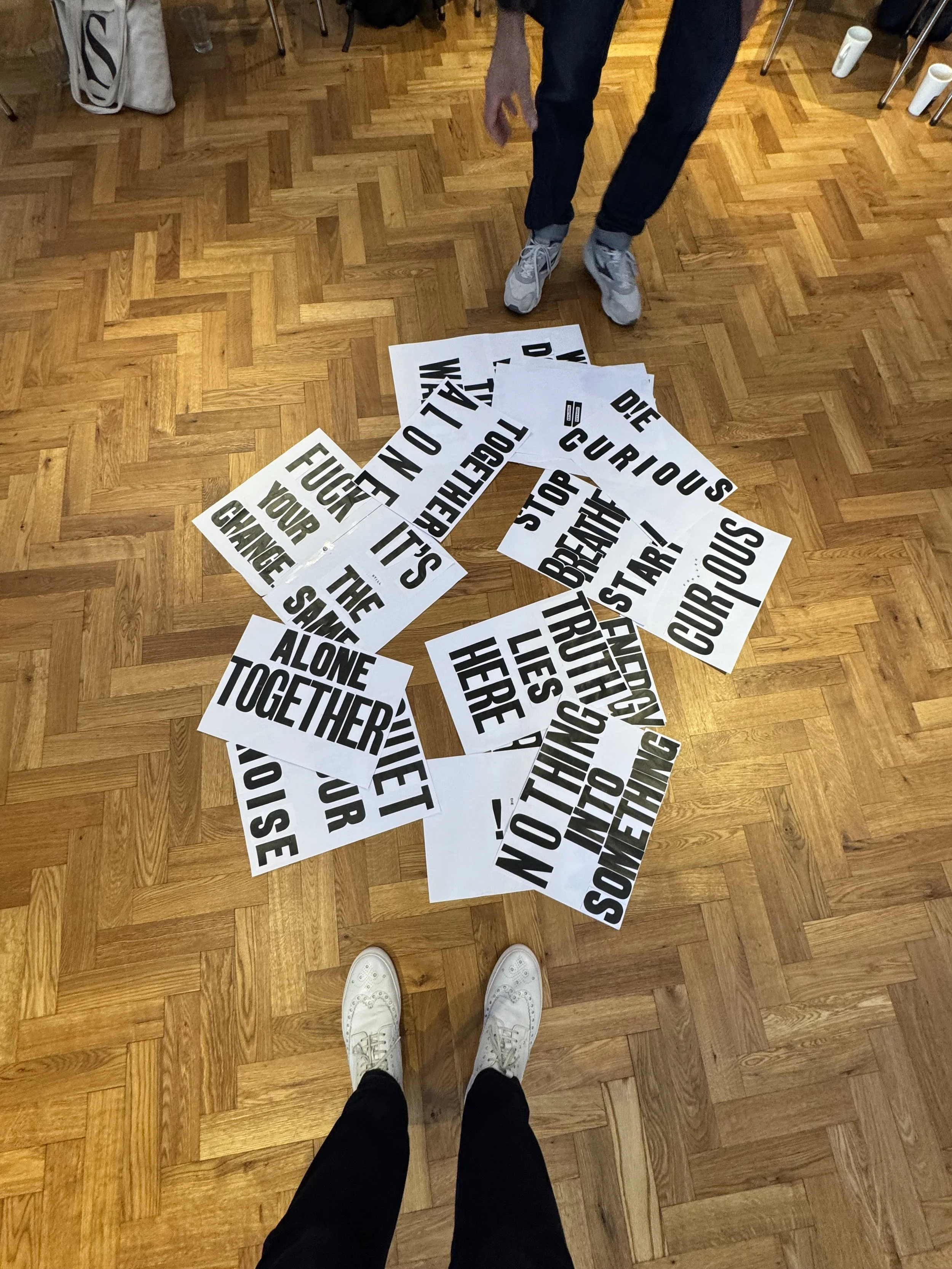D&AD Creative Leaders Program, 2025, London
Connecting Dots is the monthly newsletter for innovation leaders.
◎⁃◎
Innovation Survivors Club
Innovation is inevitable; suffering is not.
I wrote down the above quote after running a series of government roundtables. The goal was to assess the current state of AI adoption and its impact on industry innovation.
An unexpected outcome was the relief and rapid collaboration that emerged. Executives from diverse industries enjoyed discussing and learning from peer experiences.
They love it, but rarely do it. Not only do they not do it with outside peers, but they also don’t do it within their own organizations. A fact spontaneously acknowledged by multiple participants.
Of course, a quality discussion doesn't happen just because these leaders all jumped on a call and good things happened. We put a lot of thought into how to cultivate a discussion that didn’t spin its wheels, stuck on complaining or showboating.
Sure, we met our primary task of assessing and surfacing the current adoption levels, points of pain, and opportunities for gains.
However, my key takeaway was seeing the hunger of these accomplished leaders to engage with peers and unpack the realities of applied technology to improve their businesses.
It was a spontaneous example of an Innovation Survivors Club. A practice found in many highly innovative organizations, though not under that name for obvious reasons. Though it would make for some great merchandise (note to self).
So, what does an Innovation Survivors Club entail?
The "Innovation Survivors Club” is a concept or program focused on helping individuals and organizations to not only survive but thrive in the face of innovation and change. The club is a mechanism to recognize and repair the physical, reputational and emotional wear and tear of innovation.
The club emphasizes developing a "survivor's mentality" and implementing strategies to navigate challenges and adapt to new circumstances. The goal is to develop six drivers of organizational capital and innovation tolerance:
Survival Mentality:
Cultivating a mindset that is alert, engaged, and aware of potential threats and opportunities. This includes learning from past experiences and adapting to new situations.
Strategic Planning:
Developing a plan for survival and success, breaking down complex challenges into manageable steps.
Proactive Action:
Taking initiative and implementing strategies to improve the chances of survival and success.
Learning and Adaptation:
Continuously learning from both successes and failures, and adapting to new circumstances.
Resourcefulness:
Utilizing available resources effectively and creatively.
Community and Support:
Potentially connecting with others who have successfully navigated similar challenges to share experiences and insights.
Creating these learning and collaboration spaces is a greatly overlooked aspect of kick-starting and mobilizing an innovation mandate. Rarely do we acknowledge that innovation is brutally hard, even at the world’s most innovative companies.
When organizations succeed at achieving their innovation ambitions, you can usually find formal or informal versions of the Innovation Survivors Club. These are spaces to do more than learn, but also to bond over the nature of their work.
These spaces are badly needed. At the American Psychological Association annual meeting, I learned that only 11% of companies provide support for R&D failure (even in orgs that celebrate “failing fast”). While 85% of practitioners report fear as their biggest barrier to innovation, 89% of CEOs have zero strategies for how to deal with it (reference).
An Innovation Survivors Club (or whatever you call it) is one way to support your innovators. When thoughtfully designed and facilitated, it fosters empowerment in learning, problem-solving, and cooperation. It is a place where the aches and pains of innovation and organizational change can get worked out.
They are also a lot of fun, and while you don’t want it to be too formal or feel contrived, a bit of branding and making it an important “thing” goes a long way to increasing innovation dynamism.
◎⁃◎
Learn more about how to develop impactful innovation leaders.
